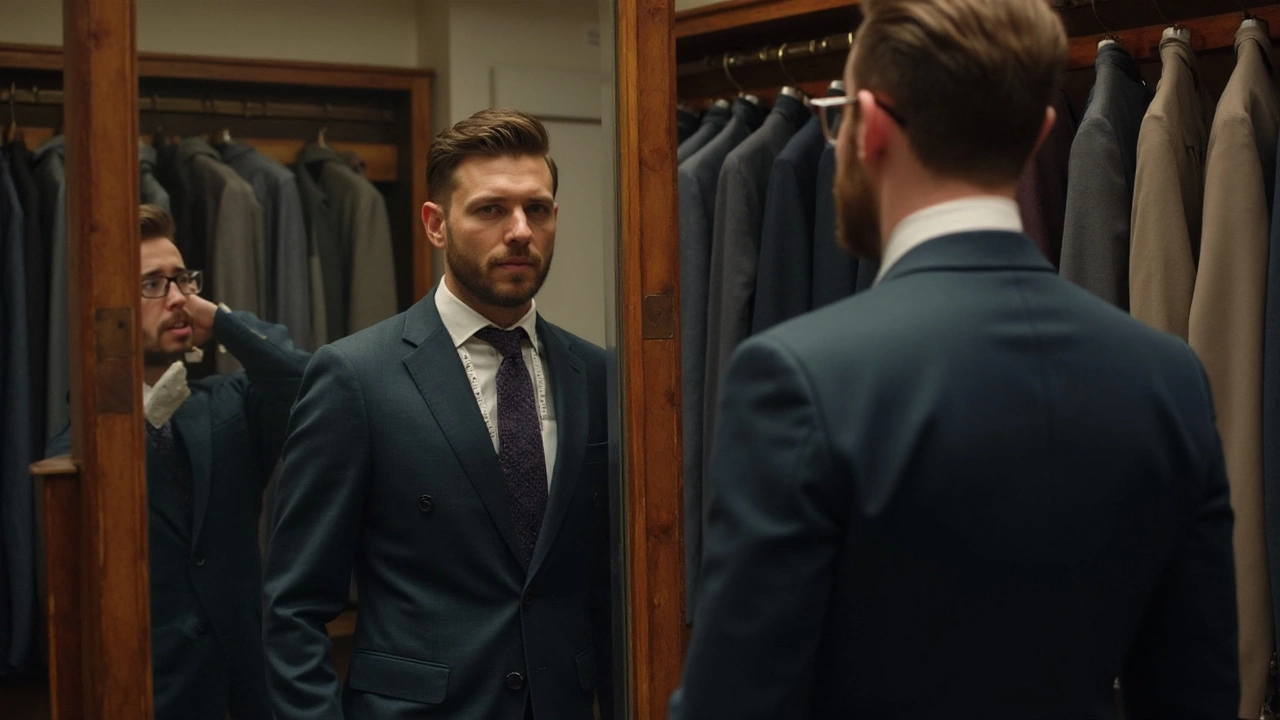Suit Buying Guide – How to Choose the Perfect Groom’s Suit
Planning a wedding means a lot of decisions, and the groom’s suit is one of the biggest. It’s easy to get lost in options, but you don’t need a fashion degree to look sharp. Below you’ll find straight‑forward advice on fit, fabric, style and accessories so you can shop with confidence and stay on budget.
Fit and Fabric Basics
The first rule is simple: a suit that fits well looks expensive, even if the price tag is modest. Start by getting measured at a reputable men’s store. Ask for shoulder, chest, waist and inseam measurements – a good tailor will note these for custom or off‑the‑rack ordering.
When you try on a jacket, the shoulder seam should end where your shoulder does. No overhang, no pinching. The sleeve length is key; you want about a quarter‑inch of shirt cuff to show. For the trousers, the break should be light – just enough to rest on the shoe without bunching.
Fabric choice depends on season and venue. Wool or wool blends work year‑round and drape nicely. For summer beach weddings, consider lightweight linen or seersucker; they breathe and keep you cool. If you’re pulling an evening look, a subtle velvet or silk blend adds a touch of luxury without trying too hard.
Choosing the Right Style and Accessories
Classic styles never go out of fashion. A two‑button, single‑breasted jacket with notch lapels works for most weddings. If you want a bit more drama, go for a peak lapel or a three‑button cut. Tuxedos with a shawl or peak lapel are perfect for formal black‑tie affairs, while a smart suit fits semi‑formal or outdoor settings.
Colour is another deciding factor. Black, navy, charcoal and deep green are safe bets. If you want something different, a deep burgundy or midnight blue can stand out without clashing with the bride’s dress.
Accessories pull the whole look together. A crisp white dress shirt is a must, but you can experiment with a subtle pattern or a contrasting collar. Choose a tie or bow tie that matches the wedding palette – silk works best for a polished finish. Pocket squares, cufflinks and a well‑chosen watch add personality without stealing the spotlight.
Don’t forget shoes. Leather oxfords or brogues in black or brown are reliable choices. Break them in before the big day to avoid blisters. If you’ve opted for a tuxedo, patent leather shoes add that classic shine.
Finally, plan for alterations. Even the best‑fitted off‑the‑rack suit usually needs a tweak at the waist or length. Schedule at least two fitting sessions: one after the initial purchase and another a week before the wedding. This timeline lets the tailor make precise adjustments and gives you time to check the final look.
By focusing on fit, picking the right fabric for the season, and adding thoughtful accessories, you’ll feel comfortable and look fantastic. The suit buying process doesn’t have to be stressful – treat it like any other wedding detail: do a little research, get measured, try on a few options, and trust a good tailor. You’ll walk down the aisle looking exactly how you imagined, ready to celebrate your day with confidence.

- May, 30 2025
- Comments 0